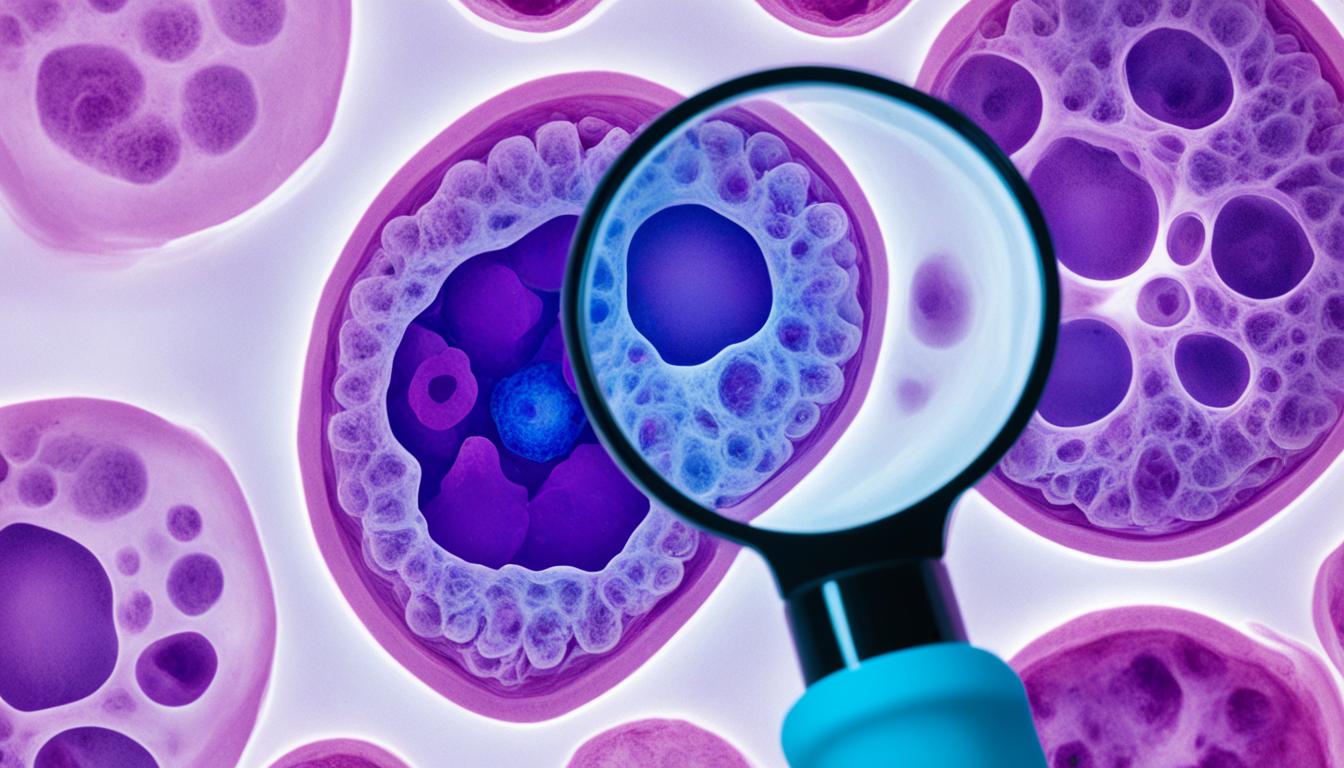Ovarian hyperstimulation syndrome (OHSS) is a serious complication of fertility treatments like in-vitro fertilization (IVF). The medications stimulate ovaries, causing too many follicles to develop. This leads to swollen, painful ovaries.
In most cases, OHSS causes slight discomfort and is mild. However, severe cases can be life-threatening if left untreated.
Key Takeaways
- Ovarian hyperstimulation syndrome (OHSS) is a serious complication of fertility treatments like IVF.
- OHSS is caused by overstimulation of the ovaries, leading to swelling and fluid buildup.
- Mild cases of OHSS cause discomfort, while severe cases can be life-threatening.
- Early diagnosis and proper management are crucial for preventing complications.
- Stem cell therapy shows promise as a potential treatment for OHSS.
Understanding Ovarian Hyperstimulation Syndrome
Ovarian hyperstimulation syndrome (OHSS) occurs when ovaries become overactive during fertility treatments. It leads to swollen, painful ovaries and fluid accumulation in the abdomen.
OHSS is a hormonal disorder caused by fertility medications like gonadotropins. These stimulate ovaries to develop multiple follicles for successful egg retrieval during IVF.
However, ovaries can become overstimulated, leading to OHSS development.
Causes and Risk Factors
The excessive production of hormones, especially human chorionic gonadotropin (hCG), causes OHSS. This hormone surge makes ovaries enlarge rapidly, leaking fluid into abdomen and chest.
Risk factors include young age, polycystic ovarian syndrome, and previous OHSS history during fertility treatments.
Stages and Symptoms
OHSS stages are based on symptom severity. Mild cases involve abdominal discomfort, bloating, nausea, and vomiting.
Moderate cases may include significant abdominal distension, reduced urine output, and breathing difficulty.
Severe cases can be life-threatening with massive fluid accumulation, organ dysfunction, and potential blood clots.
| Severity | Symptoms |
|---|---|
| Mild | Abdominal discomfort, bloating, nausea, vomiting |
| Moderate | Significant abdominal distension, reduced urine output, difficulty breathing |
| Severe | Massive fluid accumulation, organ dysfunction, blood clots, life-threatening |
Ovarian Hyperstimulation Syndrome Diagnosis
The symptoms of ovarian hyperstimulation syndrome (OHSS) can vary significantly. Mild cases often involve abdominal bloating, pain, nausea, and vomiting. In contrast, severe cases show massive fluid buildup in the abdomen and chest, potential organ dysfunction, blood clots, and breathing difficulties.
Imaging techniques play a vital role in assessing and managing OHSS. Ultrasonography is the primary modality used to evaluate ovarian enlargement and fluid accumulation. Radiographic findings may include markedly enlarged ovaries with a cystic appearance, significant ascites (fluid buildup in the abdominal cavity), and pleural effusions (fluid in the chest cavity).
In severe cases, imaging may reveal evidence of end-organ dysfunction or thrombosis. These findings, combined with clinical presentation, allow accurate diagnosis and staging of OHSS severity, guiding appropriate treatment strategies.
Imaging Findings
- Markedly enlarged ovaries, often with a cystic or “spoken wheel” appearance
- Significant ascites, or fluid buildup in the abdominal cavity
- Pleural effusions, or fluid accumulation in the chest cavity
- In severe cases, evidence of end-organ dysfunction or thrombosis
Ovarian Hyperstimulation Syndrome Treatment and Management
For mild to moderate OHSS cases, supportive care is the primary approach. This involves using anti-nausea medications, pain relievers, monitoring vital signs and fluid balance closely. Excess abdominal fluid is drained, if necessary. In most cases, the condition resolves within 7 to 10 days.
Severe and Critical Cases
Severe or critical OHSS cases require more aggressive treatment. These are characterized by massive fluid accumulation in the abdomen and chest, potential organ dysfunction, blood clots, and respiratory distress. Treatment may include hospitalization, intravenous fluid administration, diuretic use, and draining abdominal or pleural fluid.
Prevention Strategies
To prevent OHSS occurrence during fertility treatments, healthcare providers employ various strategies. These include careful monitoring of ovarian response, adjusting medication dosages as needed. In some cases, they trigger final oocyte maturation with a medication having a lower OHSS risk compared to human chorionic gonadotropin (hCG).
| Treatment Approach | Mild to Moderate OHSS | Severe and Critical OHSS |
|---|---|---|
| Supportive Care |
|
|
| Prevention Strategies |
|
|
Conclusion
In summary, ovarian hyperstimulation syndrome (OHSS) is a severe complication of fertility treatments like IVF. It occurs when excess hormones cause ovaries to enlarge and leak fluid.
Mild OHSS cases manage with anti-nausea meds, pain relievers, and fluid monitoring. Severe cases are life-threatening, needing urgent medical care.
Prevention strategies like careful monitoring and proper medication dosage reduce OHSS risk, ensuring patient safety during fertility treatments.
As assisted reproductive technology evolves, healthcare providers and patients must understand potential fertility treatment risks and complications like OHSS. Identifying and managing this condition effectively promotes better outcomes for those building families through advanced medical interventions.

